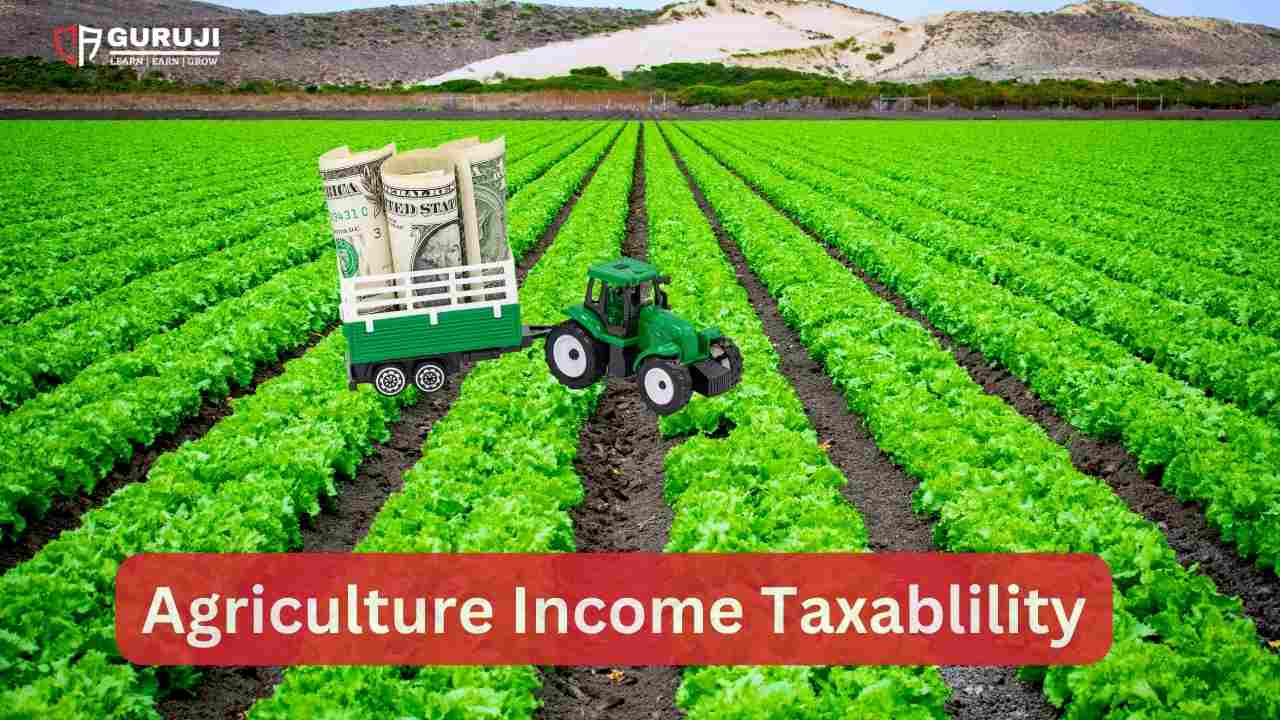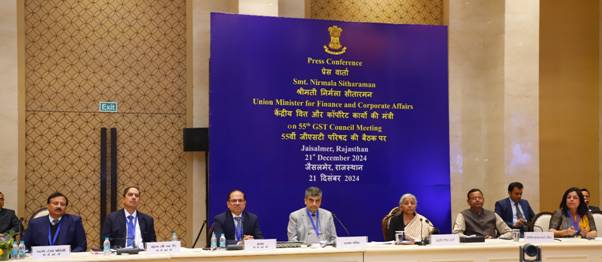Agricultural income is a crucial aspect of the Indian economy, especially given that a significant portion of the population depends on agriculture for their livelihood. Understanding how agricultural income is treated for tax purposes is essential for farmers, tax practitioners, and policymakers. Here, we provide a comprehensive overview of the tax treatment and taxability of agricultural income, including definitions, examples, and detailed explanations of the relevant laws.
Definition and Components of Agricultural Income
Agricultural income is defined under Section 2(1A) of the Income Tax Act, 1961. The Act categorizes agricultural income into three main sources:
- Rent or Revenue from Agricultural Land:
- Rent from Agricultural Land: Income derived from renting or leasing agricultural land used for agricultural purposes, including any building on such land.
- Revenue from Agricultural Land: Revenue generated from the produce of the land.
- Income from Agricultural Operations:
- Cultivation of Land: Income from basic agricultural operations like tilling, sowing, planting, and subsequent operations like weeding, harvesting, etc.
- Nurseries: Income from saplings or seedlings grown in nurseries.
- Processing: Income from processes employed to make the agricultural produce marketable, as long as the original character of the produce is retained.
- Income from Farm Buildings:
- Farmhouses: Income from buildings on or near the agricultural land used by the cultivator or receiver of rent for residential or storage purposes, provided the land is assessed for land revenue or is situated in a rural area.
Tax Exemption and Conditions
Agricultural income is exempt from income tax under Section 10(1) of the Income Tax Act. However, the Act specifies conditions and exceptions that must be met for the income to qualify as agricultural income:
- Exemption Limit: Agricultural income up to INR 5,000 is fully exempt from tax. If the income exceeds this amount, it is considered for rate purposes when calculating the tax liability on non-agricultural income.
- State Government Taxation: States have the authority to tax agricultural income if it exceeds INR 5,000 per year. However, this taxation varies from state to state.
Calculation of Taxable Income Involving Agricultural Income
While agricultural income itself is exempt from federal income tax, it is included in the total income for rate purposes, a method known as partial integration. This ensures that individuals with substantial agricultural income do not fall into lower tax brackets for their non-agricultural income. The steps for calculating taxable income involving agricultural income are as follows:
- Compute Total Income Including Agricultural Income:
- Calculate the total income by adding the agricultural income to the non-agricultural income.
- Compute tax on this combined income.
- Compute Tax on Agricultural Income and Basic Exemption Limit:
- Add the basic exemption limit to the agricultural income.
- Compute tax on this sum.
- Calculate Tax Liability:
- Subtract the tax calculated in step 2 from the tax calculated in step 1. The difference is the tax liability on the non-agricultural income.
Example Calculation
Assume an individual below 60 years of age has a non-agricultural income of INR 7,00,000 and an agricultural income of INR 2,00,000.
- Total Income Including Agricultural Income:
- Total Income (B + A) = INR 7,00,000 + INR 2,00,000 = INR 9,00,000
- Tax on INR 9,00,000: (as per the applicable tax slabs)
- Tax on Agricultural Income and Basic Exemption Limit:
- Basic Exemption Limit + Agricultural Income = INR 2,50,000 + INR 2,00,000 = INR 4,50,000
- Tax on INR 4,50,000: (as per the applicable tax slabs)
- Tax Liability:
- Tax on INR 9,00,000 – Tax on INR 4,50,000 = Final Tax Liability
Agricultural Income vs Non-Agricultural Income: Examples
- Agricultural Income Examples:
- Income from the sale of seeds.
- Rent received from leasing agricultural land.
- Profit from growing flowers and creepers.
- Interest on capital received by a partner from a firm engaged in agricultural operations.
- Non-Agricultural Income Examples:
- Income from poultry farming.
- Income from dairy farming, such as milk, butter, and cheese production.
- Rent from agricultural land held as stock-in-trade.
- Income from bee-keeping and selling honey.
Special Provisions and Considerations
- Partial Agricultural Income:
- When agricultural produce is used as raw material for other products (e.g., tea, coffee, rubber), the income is split between agricultural and business income.
- Specific Products:
- Tea: 40% of income is considered business income, 60% is agricultural income.
- Rubber: 65% is business income, 35% is agricultural income.
- Coffee: 25% business income, 75% agricultural income (different if processed further).
- Urban Agricultural Land:
- Agricultural income from urban land is treated the same as from rural land. However, income from the sale of such land may be subject to capital gains tax.
Filing Requirements and ITR Forms
- ITR 1: To be used if agricultural income is up to INR 5,000.
- ITR 2: To be used if agricultural income exceeds INR 5,000.
Section 54B: Tax Benefits on Sale and Purchase of Agricultural Land
Under Section 54B of the Income Tax Act, individuals or Hindu Undivided Families (HUFs) can claim exemption from capital gains tax on the sale of agricultural land if:
- The land has been used for agricultural purposes for at least two years immediately preceding the date of transfer.
- The taxpayer purchases another agricultural land within two years of the sale.
- The exemption amount is the lower of the capital gains or the investment in the new agricultural land.
Example of Section 54B Benefit
An individual sells agricultural land for INR 15 lakhs, making a capital gain of INR 5 lakhs. Within two years, they purchase new agricultural land for INR 8 lakhs. The entire capital gain of INR 5 lakhs can be exempted under Section 54B.
Union Budget 2023-24: Highlights for the Agricultural Sector
The Union Budget 2023-24 introduced several measures to support the agricultural sector:
- Allocation: Approximately INR 1.25 lakh crore for the Ministry of Agriculture and Farmers Welfare, including Agricultural Education and Research.
- Agriculture Accelerator Fund: Established to encourage startups by young entrepreneurs in rural areas.
Frequently Asked Questions (FAQs)
1. Are farmers exempt from income tax? Yes, farmers in India are exempt from paying income tax on agricultural income under Section 10(1) of the Income Tax Act.
2. How much agricultural income is tax-free in India? Agricultural income up to INR 5,000 is tax-free. If the total non-agricultural income plus agricultural income exceeds the basic exemption limit (INR 2.5 lakh for individuals below 60 years), agricultural income is considered for rate purposes.
3. Is income from raising animals considered agricultural income? No, income from animal husbandry, poultry farming, or dairy farming is not considered agricultural income and is taxable.
4. How should agricultural income be reported in ITR 1? Agricultural income should be reported under the “Agriculture Income” column in ITR 1. If the income exceeds INR 5,000, ITR 2 should be used.
5. Is income from the sale of trees grown for timber considered agricultural income? No, income from the sale of timber is not considered agricultural income and is taxable.
6. Can agricultural income from land in Nepal be tax-free? No, only agricultural income from land situated in India is exempt from tax.
7. How is income from growing tea treated for tax purposes? For tea, 40% of the income is taxable as business income, while 60% is exempt as agricultural income.
8. What if agricultural activities are conducted on urban land? Agricultural income from operations conducted on urban land is exempt from taxes, similar to rural land.
9. Can income from selling fruits from trees around a home be considered agricultural income? If the land and activities meet the conditions for agricultural land, the income from selling fruits can be treated as agricultural income.
10. Do I need to file ITR if I have agricultural and non-agricultural income? Yes, if the total non-agricultural income plus agricultural income exceeds the basic exemption limit, filing an ITR is required.
Conclusion
Agricultural income enjoys specific tax exemptions under the Indian Income Tax Act, which are designed to support the agricultural sector and its contributors. However, understanding the conditions, exemptions, and tax implications is crucial for compliance and effective financial planning. This comprehensive guide covers all the essential aspects of agricultural income taxation, providing clarity for taxpayers involved in agricultural activities.
Visit www.cagurujiclasses.com for practical courses











